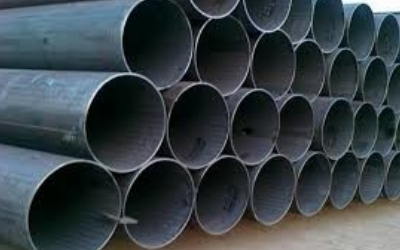
Straight seam welded pipes are widely used in oil and gas pipelines, structural applications, and water transportation due to their high strength and precision. But how are these pipes manufactured? This guide explores the step-by-step production process of straight seam welded pipes, ensuring quality and durability.

· The process begins with ultrasonic testing (UT) of steel plates to detect internal defects before forming.
· Ensures only high-quality plates are used for straight seam welded pipe production.
· Both edges of the plate are milled to achieve:
✔ Consistent width
✔ Parallel edges
✔ Proper groove shape for welding
· A pre-bending machine curves the plate edges to the required radius, preventing deformation during forming.
· The plate is pressed in stages:
o First into a "J" shape
o Then into a "C" shape
o Finally into an open "O" shape before welding
· Gas metal arc welding (MAG) joins the edges temporarily to maintain alignment before full welding.
· A multi-wire (up to 4 wires) SAW system welds the straight seam welded pipe internally for high deposition rates.
· The outer seam is welded using the same multi-wire SAW process, ensuring full penetration.
· 100% inspection of internal & external welds + base metal near the weld zone.
· X-ray industrial TV imaging checks weld integrity with high sensitivity.
· The entire straight seam welded pipe is expanded to:
✔ Improve dimensional accuracy
✔ Optimize stress distribution
· Each pipe undergoes pressure testing (1.5x working pressure) with automated data recording.
· Pipe ends are machined to meet bevel specifications for field welding.
· Re-inspection after expansion and hydrotesting to detect new defects.
· Final X-ray check on pipe ends and welds.
· Detects surface cracks at pipe ends before delivery.
✔ High Strength: Uniform stress distribution along the straight weld.
✔ Precision Manufacturing: Strict quality control ensures dimensional accuracy.
✔ Wide Applications: Used in oil & gas, water supply, and structural projects.
The production of straight seam welded pipes involves advanced forming, welding, and testing to ensure reliability. By following strict inspection protocols (UT, X-ray, hydrotesting), manufacturers deliver pipes that meet API 5L, ASTM A53, and EN 10219 standards.
Need high-quality straight seam welded pipes? Contact us for certified products with full traceability!